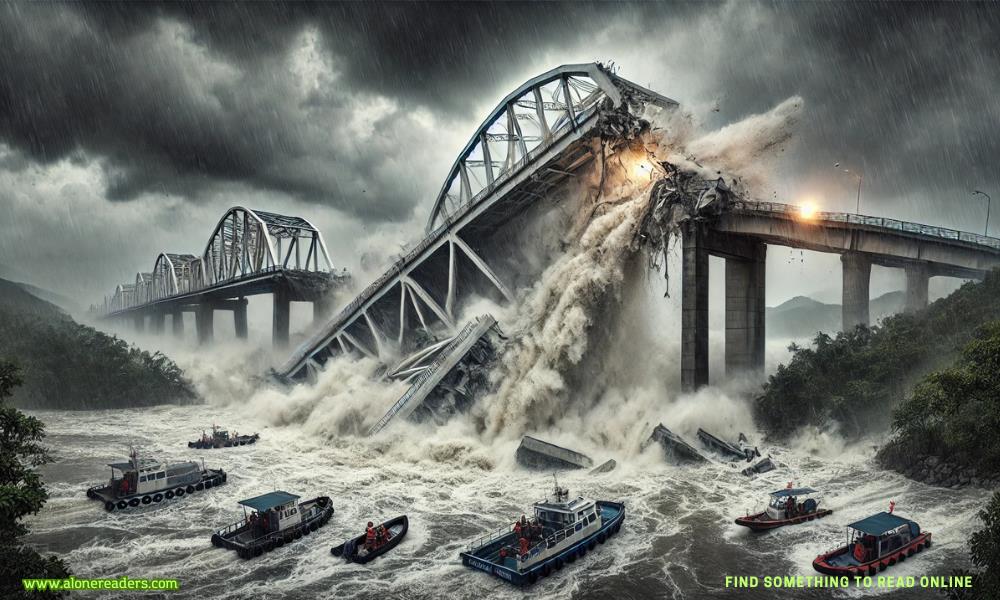
In a tragic incident that has sent shockwaves through Vietnam, the Phong Chau Bridge in the northern province of Phu Tho collapsed on [specific date], during the onslaught of Super Typhoon Yagi. This catastrophic event resulted in significant casualties, with the death toll continuing to rise as search and rescue efforts are ongoing. The collapse has not only disrupted vital transportation links but also raised serious concerns about infrastructure stability in the face of increasingly severe weather events.
At approximately [specific time], Super Typhoon Yagi made landfall in northern Vietnam, bringing with it torrential rains, gale-force winds, and widespread flooding. The Phong Chau Bridge, a critical crossing over the Lo River, was subjected to immense pressure from rising water levels and powerful winds. Despite the bridge's structural integrity being regularly inspected, it could not withstand the forces of nature unleashed by Yagi. Eyewitnesses described a harrowing scene as parts of the bridge buckled under the immense strain, sending vehicles, pedestrians, and sections of the structure plunging into the raging waters below.
Authorities confirmed that the collapse occurred during peak traffic hours, worsening the scale of the disaster. Preliminary reports indicate that several vehicles, including buses and trucks, were on the bridge at the time of the collapse. The suddenness of the incident left little time for drivers and passengers to react, leading to a high number of fatalities and injuries. The total number of casualties has yet to be confirmed, but rescue teams are continuing their operations, braving dangerous conditions in the hope of finding survivors.
Super Typhoon Yagi, one of the most powerful storms to hit Vietnam in recent years, has already left a trail of destruction across multiple provinces. With wind speeds reaching over 150 kilometers per hour, Yagi has uprooted trees, flooded homes, and caused widespread damage to infrastructure. The northern regions of Vietnam, including Phu Tho, were particularly hard-hit, with heavy rainfall triggering flash floods and landslides.
The Phong Chau Bridge collapse is one of the most significant tragedies linked to Yagi. As the region’s primary crossing over the Lo River, the bridge was a lifeline for local communities, connecting several towns and facilitating the transport of goods and services. Its destruction has not only claimed lives but also cut off a vital transportation route, affecting thousands of residents who now face severe difficulties in accessing basic necessities.
In the wake of the collapse, local authorities have mobilized search and rescue teams to scour the river for survivors. The efforts, however, have been hampered by the continued adverse weather conditions, with strong winds and flooding complicating operations. Helicopters and boats have been deployed to assist in the recovery efforts, while emergency services continue to treat the injured at nearby hospitals.
Vietnam’s Prime Minister has declared the incident a national tragedy, pledging all available resources to assist in the rescue operations. Additionally, the government has ordered a thorough investigation into the bridge’s collapse to determine whether any structural weaknesses or maintenance lapses contributed to the disaster. “Our hearts go out to the families of the victims. We will not rest until we understand the cause of this tragedy and ensure it never happens again,” the Prime Minister said during a press briefing.
The collapse of the Phong Chau Bridge during Super Typhoon Yagi has reignited debates about the state of infrastructure in Vietnam, particularly in areas prone to extreme weather. As a country that regularly faces typhoons and heavy rains, Vietnam has made significant efforts to modernize its infrastructure, but recent events have highlighted vulnerabilities in both urban and rural areas.
Experts have warned that many of the country’s older bridges, roads, and buildings are not designed to withstand the increasingly severe weather events brought on by climate change. While Vietnam has implemented stricter building codes and embarked on large-scale infrastructure projects, there remains a significant gap between the demands of modern-day weather patterns and the existing infrastructure.
In response to the Phong Chau Bridge collapse, several civil engineering experts have called for immediate action to assess the condition of other bridges and roads, particularly those in typhoon-prone regions. The collapse serves as a stark reminder of the dangers posed by outdated infrastructure in a rapidly changing climate. Proposals include increased funding for the maintenance and upgrading of critical infrastructure, as well as the incorporation of climate resilience into future projects.
Many local residents are now calling for a more proactive approach to disaster preparedness, arguing that more robust infrastructure and early warning systems could have prevented such a high number of casualties. “We knew the typhoon was coming, but we never imagined the bridge would collapse like this,” said one local resident, whose family narrowly avoided the disaster. “There must be more safety measures in place to protect us.”
Conclusion
The collapse of the Phong Chau Bridge during Super Typhoon Yagi is a heart-wrenching tragedy that has left Vietnam grappling with loss and uncertainty. As the country mourns the victims and their families, questions about infrastructure safety and climate resilience have come to the forefront of public discourse. With rescue efforts still underway and investigations ongoing, Vietnam faces the difficult task of rebuilding not just the physical structure of the bridge but also the trust and confidence of its people in the safety of their infrastructure.
The Phong Chau Bridge collapse will likely serve as a wake-up call for both the government and the public. As Vietnam continues to develop and modernize, ensuring that infrastructure can withstand the growing intensity of natural disasters will be critical to safeguarding lives and livelihoods.